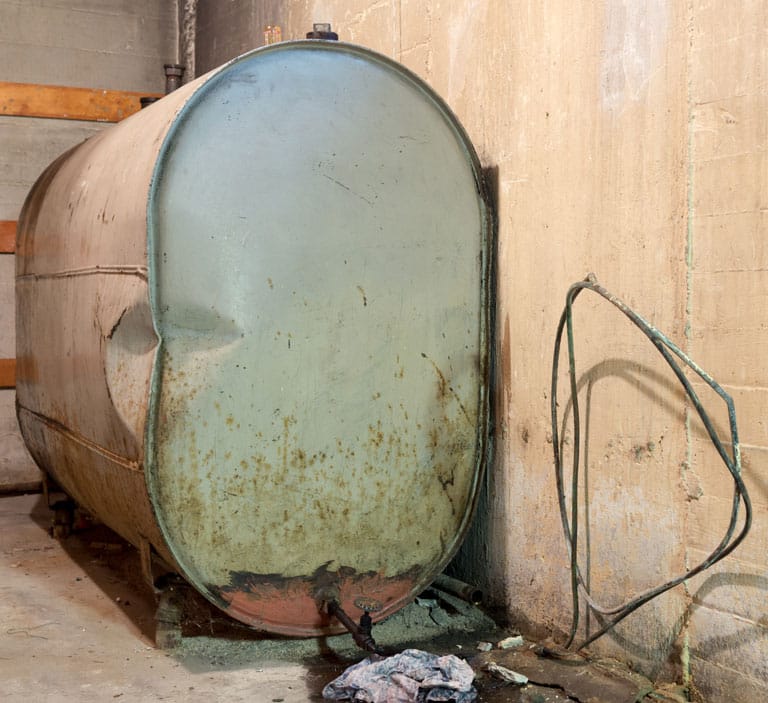The hum of a furnace in the cold evening can provide happiness for many homeowners. The oil tank – the unnoticed hero behind that warmth – goes unnoticed until a potential issue occurs. But proactive maintenance, like oil tank replacement, is crucial for your home’s safety and efficiency. This article will allow you to know the details of replacing your oil tank cost and how it can be an investment that is vital to the security of your home.

The importance of Oil Tank Maintenance: Avoidance is Key
Many homeowners don’t realize the importance of the oil tank’s service. But, a functioning oil tank is vital to your home’s infrastructure. As responsible owners of property, ensuring your heating system and oil storage container work properly and safely is paramount. It is true that a seemingly minor oil leak today could quickly become a major environmental and financial burden after.
Understanding Average Costs: A 275 Gallon Case Study
It’s all about knowledge, especially when budgeting for home maintenance tasks. Let’s look at the costs for replacing a 275 gallon oil tank. This is the standard size for heating systems in houses for homeowners. The typical cost is $3,600 for states like Massachusetts, New Hampshire and Connecticut. The price is based on a simple replacement in an outdoor or basement space without major accessibility issues.
The value of oil tank replacement goes beyond the cost.
It’s crucial to think about replacement of the oil tank as an investment that can benefit your home in terms of security and convenience. Here’s why:
Safety first: Older oil tanks could leak, creating danger of fire, and also contaminating the environment. Replacement of your tank can eliminate the risk and provides security for both you and your family.
Tanks for oil that are old can lose efficiency over time and require more frequent oil deliveries to keep warm. Modern tanks function at their highest efficiency, which could reduce heating costs in the long run.
You’ll be able to enjoy peace of mind for many years to come. An upgraded oil storage tank provides an efficient service that can last many years, eliminating any fears of leaks or unplanned breakdowns during the cold winter months.
Oil Tank Replacement Costs: Factors that affect the cost
A 275-gallon tank replacement costs approximately $3600. It’s a good base. The final price can be affected by several factors:
Tank Size Tank Size: The cost of replacing larger tanks is greater than smaller tanks.
Location of the tank: It’s more costly to take out and replace a tank that is in the ground than a tank that is situated within an easily accessible crawlspace or basement.
If you have tanks that are difficult to access due the surrounding structures or the tightness of your space and tight space, the labor costs will be higher.
Disposal of the Old Tank: The proper disposal of the tank often will result in additional costs.
Planned Budgeting for the Replacement of Oil Tanks and planning for the future of Your Home
Oil tanks usually have a lifespan of 15 to 30 years subject to a range of variables. You can plan for a tank replacement in advance when you know the approximate age. It is possible to arrange an inspection with a professional so that you can receive an accurate quote on replacement.
It is important to invest in your home’s safety and Sustainability
Tanks of oil are not just meant to provide warmth and comfort, but they are also an investment in the planet. Older oil tanks may leak, contaminating the soil and groundwater. Modern tanks are built to meet the strictest environmental standards, which minimizes the possibility of damage to the environment and ensures responsible storage.
The power of knowledge is in the mind: how to manage the health of your home
Make educated choices about your home maintenance by understanding the costs of replacing an oil tank. It is possible to ensure that your heating system in your home is safe, environmentally-friendly, and efficient for years by focusing on the proactive replacement. Be prepared by a potential oil tank issue during the peak of winter. Plan and budget for this maintenance task to ensure you stay cozy and warm during the coldest seasons.